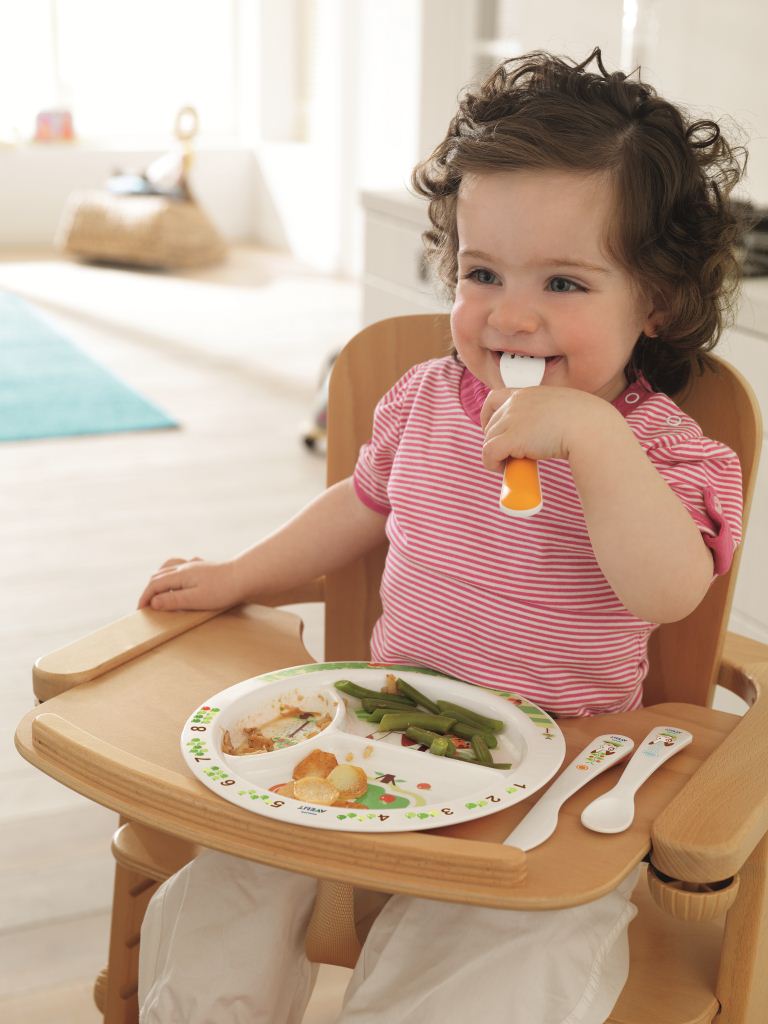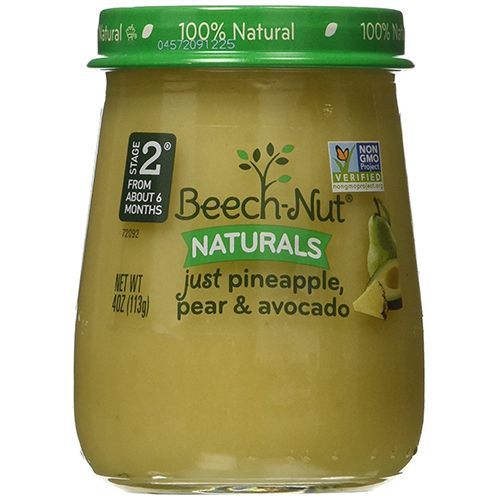Feeding babies tuna
When Can Babies Eat Tuna? Tuna for Babies - First Foods
Warning
While the FDA deems “canned light tuna” safe for children age 2 and up, the levels of mercury in studies of canned light tuna (or any other kind of canned tuna) did not meet our standards for babies. Further, a Consumer Reports analysis of canned light tuna found that the mercury levels in the samples varied widely, with some containing double the average amount of mercury listed by the FDA.1 The research and recommendations are unclear around how often a baby younger than 2 years old can have tuna, so consider the risks and explore healthier alternatives.
When can babies eat tuna?
Tuna is tricky, especially when it comes to babies. We recommend serving other fish that are lower in mercury and to refrain from serving tuna of any variety to babies and toddlers under the age of two.
While the FDA deems “canned light tuna” safe for children age 2 and up, the levels of mercury in studies of canned light tuna (or any other kind of canned tuna) did not meet our fish standards for babies. Further, a Consumer Reports analysis of canned light tuna found that the mercury levels in the samples varied widely, with some containing double the average amount of mercury listed by the FDA.2
The research and recommendations are unclear around how often a baby younger than 2 years old can have tuna, so consider the risks and explore healthier alternatives. There are a number of safe canned fish options, including low-sodium sardines and low-sodium, wild-caught salmon.
Recommended Guide: Best & Worst Fish for Babies
Is tuna healthy for babies?
Not in our opinion. Tuna contains many essential nutrients including iron, potassium, protein, selenium, and vitamins D and B12. Yet all varieties of tuna, including the commonly recommended “canned light” and skipjack varieties, contain varying levels of mercury, a toxic metal which can have devastating effects on our central nervous and neurological systems.3 The most vulnerable? Babies.
Mercury is a highly toxic metal and there is no known safe level of exposure.4 Most fish these days contain varying levels of mercury as a result of pollution from coal and energy plants that emit toxic metals into the air, which then settle into the water and bind to the flesh of fish. Mercury accumulates within the body (and can take decades to expel), which makes it a particularly persistent and progressive toxin.5
To make matters worse, of all canned foods, tuna has some of the highest levels of bisphenol-A, or BPA, which is a chemical that’s used to line the interior of plastic bottles and aluminum cans. Toxins bind to fats, and because tuna (and other fish) are naturally high in fats, the fish is highly susceptive to the BPA in a can’s lining. Always purchase cans or pouches marked BPA-free.
Which tuna varieties are lowest in mercury?
We recommend skipping the tuna and serving fish that are lower in mercury for your baby.
If your child is older than age 2, you may introduce canned tuna labeled “canned light” or “skipjack” as a special treat. Just be sure to read the fine print on the labels and avoid albacore tuna as well as tuna labeled “chunk white” and “gourmet” (also referred to as “tonno”), which are typically made from larger species of tuna. Larger tuna species (ahi, albacore, bigeye, bluefin, and yellowfin) are not safe for babies or children because they contain high levels of mercury.
Just be sure to read the fine print on the labels and avoid albacore tuna as well as tuna labeled “chunk white” and “gourmet” (also referred to as “tonno”), which are typically made from larger species of tuna. Larger tuna species (ahi, albacore, bigeye, bluefin, and yellowfin) are not safe for babies or children because they contain high levels of mercury.
Of all tuna varieties, skipjack tuna has the lowest mercury levels, though it is our opinion that it is best to skip serving tuna—including canned light tuna / skipjack tuna—until your child’s second birthday. Even then, we recommend limiting consumption and exploring healthier options.6
Lastly, skipjack tuna is often caught using large nets, called “purse seines,” which result in bycatch of other sea creatures like dolphins, sea turtles, and sharks that are often killed as they are released back into the sea. A respected go-to resource, the Monterey Bay Aquarium Seafood Watch, recommends avoiding many commercial sources of tunas because of these environmental impacts and more.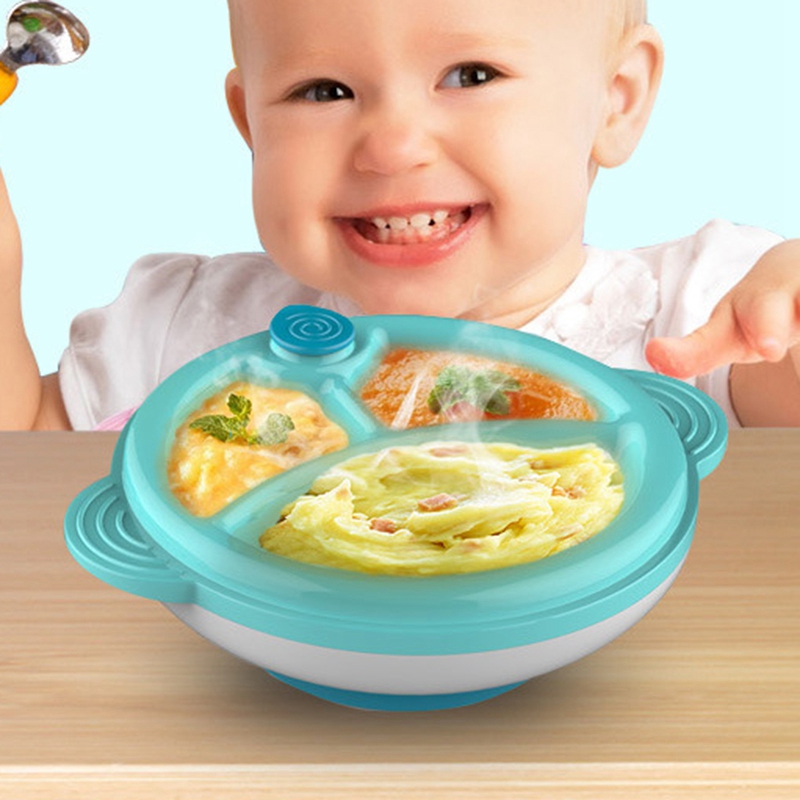 7 So if you are dead set on buying tuna (and if you can afford it), purchase “canned light” tuna brands labeled “pole-caught” or “line-caught” to minimize the environmental impact.
7 So if you are dead set on buying tuna (and if you can afford it), purchase “canned light” tuna brands labeled “pole-caught” or “line-caught” to minimize the environmental impact.
Is tuna a common choking hazard for babies?
Tuna is not high on the list of common choking hazard for babies, but it can be hard for babies to swallow. As with any dry fish or meat, adding some oil, mayonnaise, or yogurt will make it easier and safer to swallow. Regardless, always stay close to your children during mealtimes, as in theory any food could present a choking hazard.
For more information, visit our section on gagging and choking and familiarize yourself with common choking hazards.
Is tuna a common allergen?
Yes. Finned fish is a common food allergen.8 That said, it’s estimated that only 1% of Americans are allergic to finned fish.9
To introduce tuna, start with a small quantity of low sodium “canned light” or “skipjack” tuna and watch closely as your baby eats. If there is no adverse reaction on the first couple of times, gradually increase the quantity over future servings.
If there is no adverse reaction on the first couple of times, gradually increase the quantity over future servings.
If you have a family history of allergies, or suspect your baby may be allergic to fish, consult an allergist before introducing tuna.
How do you prepare tuna for babies with baby-led weaning?
Every baby develops on their own timeline, and the suggestions on how to cut or prepare particular foods are generalizations for a broad audience. Your child is an individual and may have needs or considerations beyond generally accepted practices. In determining the recommendations for size and shape of foods, we use the best available scientific information regarding gross, fine, and oral motor development to minimize choking risk. The preparation suggestions we offer are for informational purposes only and are not a substitute for child-specific, one-on-one advice from your pediatric medical or health professional or provider. It is impossible to fully eliminate all risk of a baby or child choking on any liquid, puree, or food. We advise you to follow all safety protocols we suggest to create a safe eating environment and to make educated choices for your child regarding their specific needs. Never disregard professional medical advice or delay in seeking it because of something you have read or seen here.
We advise you to follow all safety protocols we suggest to create a safe eating environment and to make educated choices for your child regarding their specific needs. Never disregard professional medical advice or delay in seeking it because of something you have read or seen here.
6 to 24 months old: It is our opinion that it is best to skip tuna and serve other canned fish that are lower in mercury (such as canned salmon, sardines, or North Atlantic mackerel).
24 months old and older: If your child is older than age 2, and you’d like to introduce tuna, start by purchasing low sodium “canned light” or “skipjack” tuna. To prepare it as a simple tuna fish, drain the tuna from the can, break the fish into flakes, then mix with avocado, mayonnaise, tahini, or a healthy oil of your choice.
For more information on how to cut food for babies, visit our page on Food Sizes & Shapes.
Introduce low-sodium canned sardines to your baby early on in your solids journey. Canned sardines are a wonderful alternative to tuna and while a bit on the stinky side, are among the fish lowest in mercury of all the fish in the sea.
Canned sardines are a wonderful alternative to tuna and while a bit on the stinky side, are among the fish lowest in mercury of all the fish in the sea.
Recipe: Tuna Arancini*
2 years+
Ingredients
- White rice
- Whole milk
- Fish fillets (fresh or canned salmon, skipjack tuna, or trout packed in water)
- Lemon
- Olive oil or butter
- Shallot or onion
- Egg
- Chives or parsley (optional)
- Parmesan cheese (optional)
- Breadcrumbs or garbanzo bean flour
- Vegetable oil
Directions
- Cook ½ cup of rice according to the package’s instructions, using milk in place of water.
- As the rice is cooking, prepare the fish. Using canned fish? Open 2 cans or pouches, rinse the fish, then skip the rest of this step. Opting for fresh fish? Remove the skin from 2 small boneless fillets (around 4 ounces, or 1/4 pound), check for any lingering bones, then cube the flesh.
- Add the fish to a medium sauce pot along with a couple slices of lemon and enough water to cover by an inch.

- Cover and bring the pot to a boil, then immediately turn down the heat to medium and let it gently simmer for 5 to 7 minutes. The fish is done when the tip of a knife inserted into the thickest part shows no translucent flesh.
- Remove the fish to a cutting board and let cool.
- As the fish and rice are cooking, peel and mince 2 medium shallots or 1 medium onion, then sauté in a skillet with a pad of butter or splash of olive oil.
- Once the onion is translucent, turn off the heat and transfer the mix to a large bowl.
- Once the onion has cooled, crack 3 eggs into the mix, then add the cooked rice and fish, plus a couple spoonfuls of minced herbs and a few scoops of parmesan cheese if you want to deepen the flavor.
- Mix to create a mash, then chill in the fridge for 1 hour.
- While the arancini mash is chilling, pre-heat the oven to 425 degrees and add 2 cups of breadcrumbs (or garbanzo bean flour for a gluten-free meal) to a wide, shallow bowl or plate.

- Place a baking sheet lined with parchment paper on the counter next to the bowl.
- Remove the arancini mash from the fridge, and using your hands or a spoon, form little balls (1 to 2 inches in diameter) and place them on the baking sheet.
- Once the tray is full, roll each ball in breadcrumbs or garbanzo bean flour, and return to the baking sheet.
- Bake for 25 minutes, until the balls are golden brown. Let cool before serving to your baby. Store extra arancini in a sealed container in the fridge for future snacking.
- While the first batch is baking, prepare a second batch on another baking sheet lined with parchment. Put this batch in the freezer. Once the balls are fully frozen (about 1 hour), transfer to a freezer bag or sealed container and store in the freezer for future mealtimes.
*Note: This recipe contains a number of potentially allergenic foods. Only serve it after dairy, eggs, finned fish, and wheat have been safely introduced.
Flavor Pairings
Canned tuna pairs well with avocado, celery, cucumber, and potatoes, as well as spices like cumin and herbs like chives and dill.
- Which Fish Are Safe for Pregnant Women? Consumer Reports. (website) Retrieved February 3, 2020.
- Which Fish Are Safe for Pregnant Women? Consumer Reports. (website) Retrieved February 3, 2020.
- Bose-O’Reilly, S., McKarty, K., Steckling, N., & Lettmeier, B. (2011, May 17). Mercury exposure and children’s health. Current Problems in Pediatric and Adolescent Health, 40(8), 186-215. doi: 10.1016/j.cppeds.2010.07.002
- Bose-O’Reilly, S., McKarty, K., Steckling, N., & Lettmeier, B. (2011, May 17). Mercury exposure and children’s health. Current Problems in Pediatric and Adolescent Health, 40(8), 186-215. doi: 10.1016/j.cppeds.2010.07.002.
- Rice, K., Walker, E., Wu, M., Gillette, C., & Blough, E. (2014, Mar. 31). Environmental mercury and its toxic effects. Journal of Preventative Medicine and Public Health, 47(2): 74-83.
 doi: 10.3961/jpmph.2014.47.2.74
doi: 10.3961/jpmph.2014.47.2.74 - Environmental Working Group. (2014, Sept. 18). EWG’s Consumer Guide to Seafood: Executive Summary. Retrieved January 27, 2020
- Monterey Bay Aquarium Seafood Watch. Tuna Recommendations. Retrieved February 2, 2020
- Food Allergy Research & Education. Fish allergy. Retrieved January 27, 2020
- Food Allergy & Anaphylaxis Connection Team. Food Allergy & Anaphylaxis – Fish. Retrieved January 9, 2020
Can Babies Eat Tuna? Benefits, Risks And Precautions To Take
This fish is safe for babies, but introduce it only after they are comfortable with solids.
Research-backed
MomJunction believes in providing reliable, research-backed information to you. As per our strong editorial policy requirements, we base our health articles on references (citations) taken from authority sites, international journals, and research studies. However, if you find any incongruencies, feel free to write to us.
Image: Shutterstock
Tuna is among the most consumed fish in the world. The United Nations even celebrates “World Tuna Day” on the second of May to mark the economic and nutritional importance of the fish (1). However, you may be doubtful about the safety of tuna for babies as it is quite likely to contain mercury, which may have adverse effects on your baby’s health (2).
Keep reading this post, where we provide more information about the health benefits of tuna for babies, precautions to observe, and recipes to prepare delicious fish dishes for infants.
Types Of Tuna – What Is Safe And What Is Not?
There are a total of 15 species of tuna, out of which five commercially important tropical species are most commonly used as food. These species are yellowfin, bigeye, bluefin, skipjack, and albacore (3).
Internationally, tuna is used fresh, frozen, or canned. As per FDA, the best choices of tuna are light canned skipjack tuna, canned/fresh/frozen albacore, yellowfin, and white tuna.
The FDA recommends avoiding bigeye tuna (4). These recommendations are made on the basis of mercury levels and other contaminants that might be present in the fish.
Can Babies Eat Tuna?
Yes, babies can eat tuna. However, the right age to include it in your baby’s diet is not clear.
According to the American Academy of Pediatrics, a baby’s diet can include fish within a few months of starting solids (5). Therefore, once your baby shows the signs of readiness for solids, then you can consider introducing tuna. However, it is best to consult a pediatrician before you feed tuna to your baby.
How Much Tuna Can A Baby Eat?
The US FDA and EPA recommend the consumption of one ounce (28 grams) of fish per week for kids aged two years. This recommendation mainly includes marine-derived “oily fish”, such as tuna (4) (6). However, for babies below two years of age, no specific serving size per day or week has been mentioned.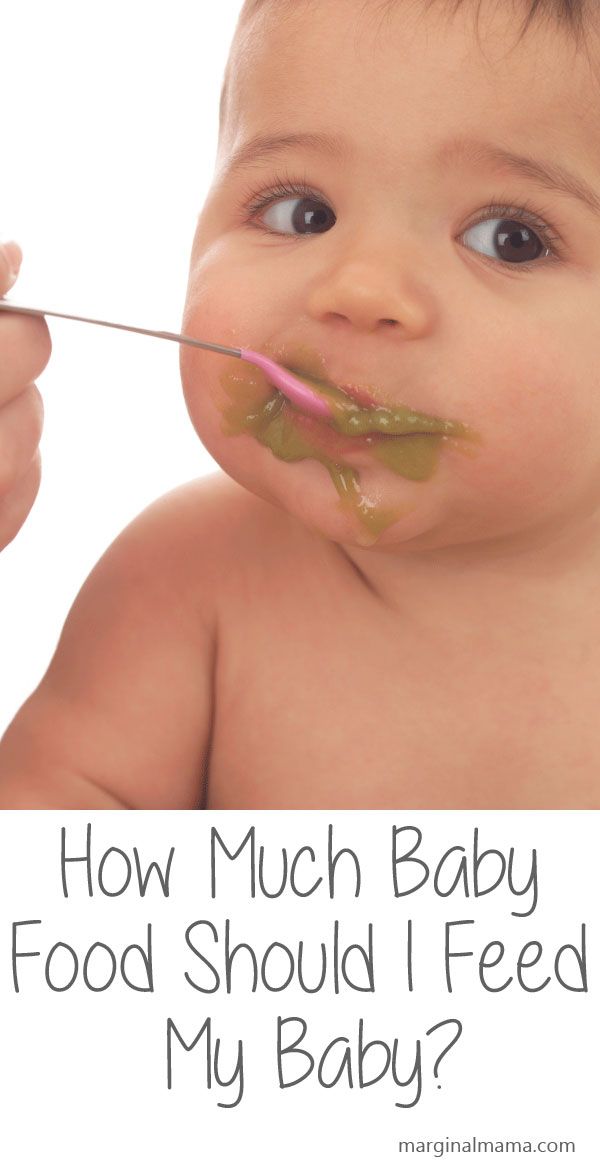 To decide on a safe intake limit, consultation with a pediatric nutritionist is advisable.
To decide on a safe intake limit, consultation with a pediatric nutritionist is advisable.
Nutritional Value Of Tuna
Apart from being a good source of essential nutrients like omega-3 fatty acid, selenium, and vitamin-D, tuna has plenty of protein, too (7) (8).
Below is the approximate nutritional composition of 100 grams of fresh tuna.
| Name | Amount | RDA |
|---|---|---|
| Water | 74.03g | – |
| Energy | 109Kcal | – |
| Protein | 24.4g | |
| Total lipid (fat) | 0.49g | |
| Calcium, Ca | 4mg | 210mg (0-6 months) 270mg (7-12 months) |
| Magnesium, Mg | 35mg | 30mg (0-6 months) 75mg (7-12 months) |
| Phosphorus, P | 278mg | 100mg (0-6 months) 275mg (7-12 months) |
| Potassium, K | 441mg | 500mg (0-6 months) 700mg (7-12 months) |
| Sodium, Na | 45mg | 120mg (0-6 months) 200mg (7-12 months) |
| Selenium, Se | 90.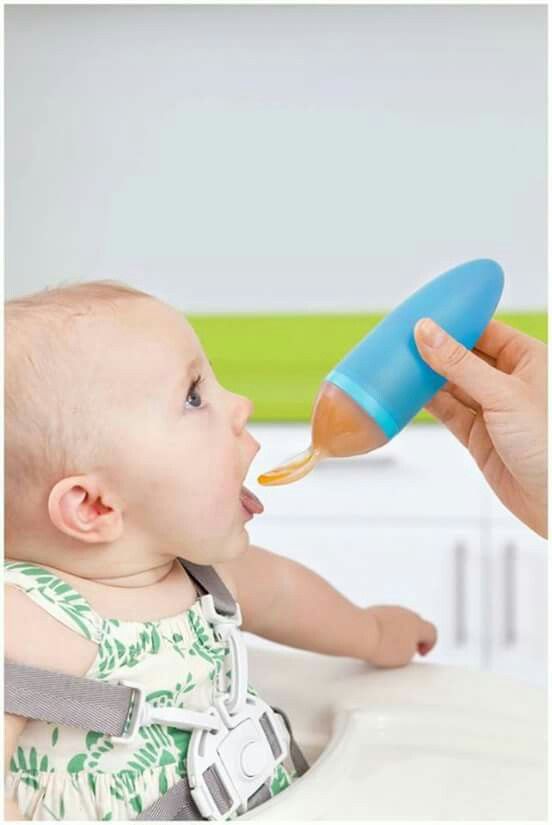 6µg 6µg | 12µg |
| Niacin | 18.475mg | 5.4mg |
| Folate, total | 2µg | 24µg (0-6 months) 32µg (7-12 months) |
| Choline, total | 65µg | – |
| Vitamin B-12 | 2.08µg | 0.1µg |
| Vitamin D (D2 + D3) | 1.7µg | 10µg |
Sources: U.S. Department of Agriculture (9) and World Health Organization (10)
Health Benefits Of Tuna For Babies
Below are some benefits that your baby could reap by consuming tuna in a well-balanced diet.
- Growth and development: Coldwater fishes such as tuna are an excellent source of omega-3 fatty acids, such as DHA and EPA (11). Both EPA and DHA are essential fats that are required in optimum amounts to support the proper growth and development of your baby’s eye, brain, immune, and nervous system (12).
- Physiological functions: Protein helps in the regulation of various body functions crucial for sustenance (13).
 Tuna has a considerable amount of high-quality protein, which can be helpful in the healthy growth of the baby (14).
Tuna has a considerable amount of high-quality protein, which can be helpful in the healthy growth of the baby (14).
- Bone development: Vitamin-D is a fat-soluble vitamin that is necessary for calcium absorption. Besides, it is required to perform various other functions such as regulation of neuromuscular processes and hormone production in the body (15). Tuna is considered as an essential source of vitamin-D, considering the nutrient is naturally found in very few foods (16).
- Overall health: Tuna is a good source of various micronutrients such as magnesium, phosphorus, potassium, sodium, selenium, and thiamine. Owing to these nutrients, regular consumption of tuna could have beneficial effects on the overall health of the baby in the long run.
As you know the benefits, it is also wise to know the possible side-effects of consuming tuna.
Risks Of Tuna For Babies
Tuna (fresh/canned) is associated with mercury exposure.![]() As per WHO consideration, mercury is one of the top ten chemicals of major public health concern (17). Exposure to mercury during the early years of life can cause serious health effects on the nervous, immune, and digestive systems.
As per WHO consideration, mercury is one of the top ten chemicals of major public health concern (17). Exposure to mercury during the early years of life can cause serious health effects on the nervous, immune, and digestive systems.
Besides mercury, canned tuna has other possible contaminants due to commercial handling and processing. A few examples are the elements lead and cadmium, which can be bad for health too. Therefore, the Office of Community and Public Health, USA (OCPH) recommends “avoiding excessive amounts of tuna in diet”. Eating one can per week should not be a problem for children under six years of age (18). However, it is best to stick to an ounce or less for babies. Consult a pediatrician or pediatric dietician to learn the safe quantity of tuna for your baby.
Precautions To Take While Introducing Tuna To Babies
Below is a list of precautionary steps to observe when feeding tuna to babies.
- Acknowledge the fact that all tunas can be possibly contaminated.
 It may not always be possible to avoid mercury entirely. So look for options with less mercury over the ones with possibly higher levels. Canned tuna, especially white, tend to have high amounts of mercury, whereas canned light tuna is considered to have low levels of mercury.
It may not always be possible to avoid mercury entirely. So look for options with less mercury over the ones with possibly higher levels. Canned tuna, especially white, tend to have high amounts of mercury, whereas canned light tuna is considered to have low levels of mercury.
- Follow FDA’s latest advice about eating fish. It will help you choose the best for your baby and yourself.
- Check for labels while you are buying canned tuna. Labels will help you identify the safest option available over the shelf.
- As you prepare tuna for your baby, ensure that you remove bones. This is important if you are using fresh tuna instead of canned.
- While feeding, start with small amounts. Watch for the possible signs of fish allergy or intolerance. If any concerns are observed, discontinue feeding immediately.
- Avoid introducing tuna with any other new food.
 It can help you determine allergies easily and might also prevent any cross-reaction with other food items.
It can help you determine allergies easily and might also prevent any cross-reaction with other food items.
- To know more about the levels of mercury, see the FDA food safety website or the EPA website. You can also look for your local advisories, especially for tuna caught fresh.
As always, make sure there is variety in your child’s diet, just because fish is a good source of nutrition, do not forget it has its hazards as well.
Precautionary steps, when followed accurately, mitigate the potential health risks associated with tuna.
Let’s check some interesting recipes that you could try for your baby.
Tuna Recipes For Babies
Tuna puree is the simplest option to choose when introducing tuna to the baby for the first time. Once your baby gets comfortable with it, then you can try these interesting and nutritionally sumptuous recipes.
1.
Image: Shutterstock
An ideal tuna recipe since it is easy to swallow and is nutritionally balanced.
You will need:
- 1 small potato (peeled and diced)
- 1 cup broccoli
- 20g tuna (canned, light)
How to:
- Take a thick bottom pan and boil potato in water for 15 minutes.
- Mash the boiled potato with a fork until you get a rough paste.
- Next, wash and separate the broccoli florets. Put the cleaned florets and tuna in another pan and boil them for about 10 minutes.
- Drain the water and add the mashed potato to the cooked broccoli and tuna.
- Stir together until all mixed. Serve the dish warm
2. Grilled tuna with avocado and cucumber
Image: iStock
You will need:
- ¼ cucumber, diced
- 1 cup small tomatoes or cherry tomatoes, sliced
- ½ tbsp finely chopped fresh ginger
- 3 medium onions, chopped
- 1 tbsp lime juice
- ¼ tsp salt
- 1 avocado, thick slices
- 2 fresh wild tuna steaks (approx.
eight ounces or 226 grams)
- 1 tbsp sesame seeds, roasted
- Extra virgin olive oil
How to:
- Take a medium-sized bowl, put the cucumber, tomatoes, ginger, onions, lime juice, one tablespoon olive oil, and salt.
- Mix everything together well and then fold the mixture in the avocado slices.
- Meanwhile, heat the grill to medium-high.
- As the grill is getting heated, rub both sides of the tuna with oil.
- Grill each side for three to four minutes.
- Once done, slice the tuna and sprinkle sesame seeds.
- Serve hot with a homemade sauce of your choice.
1. Is tuna every day healthy for my baby?
Considering the high mercury content of tuna, children shouldn’t eat tuna every day (19).
2. Can I give my baby tuna mayo?
Yes, tuna mayo can be a delicious snack for babies that you can experiment with and add veggies of your choice (20).
Tuna for babies is a good choice for their overall strong growth and development due to the fish’s richness in omega-3 fatty acids, essential vitamins, and other micronutrients. However, since seafood allergies are not uncommon, check your baby for any allergic reactions after starting their tuna feed. If your child has a family history of allergies or you are in doubt, consult your pediatrician before feeding tuna to your baby. Nevertheless, as long as you feed your child an age-appropriate, safe quantity of tuna, you may include it in your baby’s diet.
Key Pointers
- Tuna can be included in your baby’s diet a few days after starting solids if the pediatrician approves.
- It is a rich source of proteins and essential nutrients required for the baby’s proper development.
- Tuna mash pie, grilled tuna, and a few other recipes as you read along.
References:
MomJunction's articles are written after analyzing the research works of expert authors and institutions. Our references consist of resources established by authorities in their respective fields. You can learn more about the authenticity of the information we present in our editorial policy.
1. Is Your Tuna Sustainable?; United Nations
2. Mercury in Fish; American Academy of Pediatrics
3. G D Khedkar and B V Jadhao et al.; Tuna and Tuna-like Fish of Tropical Climates; Science Direct
4. Advice About Eating Fish; FDA
5. Starting Solid Foods; Healthy Eating; American Academy of Pediatrics
6. Dietary Recommendations For Fish Consumption; National Center For Biotechnology Information
7. 20 Amazing Health Benefits Of Tuna Fish; Lifehack
8. Netting Billions: A Global Valuation of Tuna; PEW
9. Tuna, fresh, raw – (SURVEY (FNDDS), 337821); Food Data Central; USDA
10. Feeding and nutrition of infants and young children; WHO
11. Omega-3 Fatty Acids; National Institute of Health
12. Consider Omega-3 Supplementation For The Health Of Your Baby; American Pregnancy Association
13. Protein Structure and Function; National Center For Biotechnology Information
Protein Structure and Function; National Center For Biotechnology Information
14. D.Khedkar et al.; Tuna and Tuna-like Fish of Tropical Climates; Science Direct
15. Vitamin D; National Institute of Health; U.S Department of Health and Human Service
16. Calcium and Vitamin D; National Osteoporosis Foundation
17. Mercury and health; WHO
18. Waqar Ashraf; Levels of Selected Heavy Metals In Tuna Fish; Researchgate
19. New Study: Mercury in Tuna May Present Greater Risk than Thought: Vermont Public Interest Research Group
20. Tuna mayo hot potato; NHS
The following two tabs change content below.
- Reviewer
- Author
Swati Patwal is a clinical nutritionist, a Certified Diabetes Educator (CDE) and a toddler mom with over eight years of experience in diverse fields of nutrition. She started her career as a CSR project coordinator for a healthy eating and active lifestyle project catering to school children.![]() Then she worked as a nutrition faculty and clinical nutrition coach in different... more
Then she worked as a nutrition faculty and clinical nutrition coach in different... more
Jyoti Benjamin has 25 years of experience as a clinical dietitian and currently works in Seattle. She focuses on teaching people the value of good nutrition and helping them lead healthy lives by natural means. Benjamin has a masters in Foods and Nutrition, and has been a longtime member and Fellow of AND (Academy of Nutrition and Dietetics) and the... more
Is It Safe To Eat Lotus Seeds (Makhana)..
Is It Safe To Eat Lotus Seeds (Makhana)..
Dry Fruits During Pregnancy: Benefits,..
Dry Fruits During Pregnancy: Benefits,..
Spinach For Babies: Right Age, Benefits..
Spinach For Babies: Right Age, Benefits..
Cinnamon For Babies: Safety, Benefits..
Cinnamon For Babies: Safety, Benefits..
Is It Safe To Consume Cinnamon During..
Is It Safe To Consume Cinnamon During.
 .
.Top 10 Food Ideas For Your 16 Months..
Top 10 Food Ideas For Your 16 Months..
4 Possible Health Benefits Of..
4 Possible Health Benefits Of..
ORS for Babies: Dosage, Benefits And..
ORS for Babies: Dosage, Benefits And..
13 Excellent Benefits Of Avocados..
13 Excellent Benefits Of Avocados..
possible or not, from what age
Contents
Tuna is a large commercial fish of the mackerel family. The product has an exquisite taste, is considered a delicacy and quite expensive. The high cost is due to the special composition of the meat. The red-pink flesh of these fish contains a huge amount of useful substances: from essential amino acids to trace elements and vitamins, antioxidants. For the most valuable nutritional properties, tuna meat is often called "sea chicken" or "sea calf".
Composition and properties of tuna
Tuna is in great demand in the markets and shops, and this is not surprising.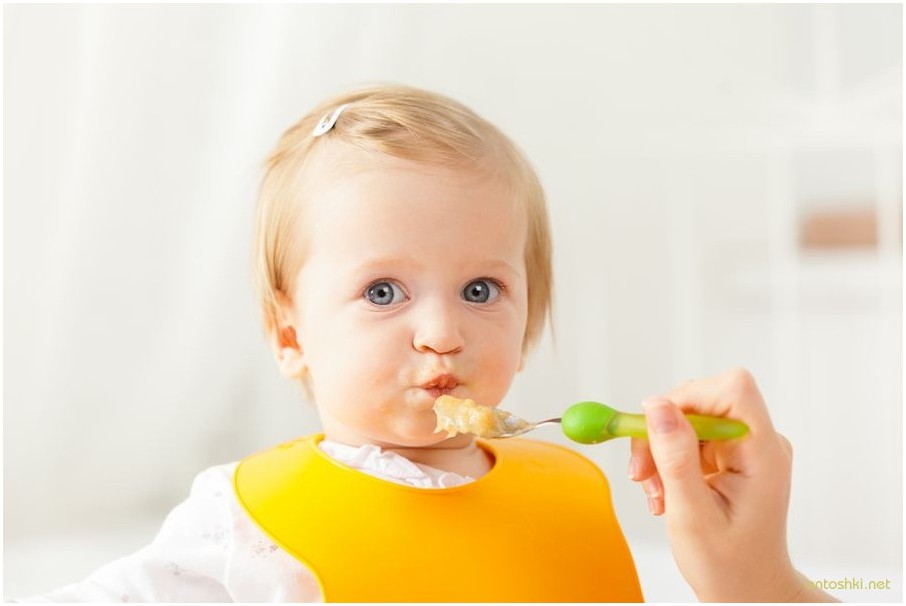 This unique product is equally useful in any form - chilled, frozen, canned. The main thing is that the carcass is fresh. Tuna fillet resembles beef in color - it is quite bright, the color is uniform. More details about whether children can have tuna, at what age and how to choose the right tasty and high-quality product will be described below.
This unique product is equally useful in any form - chilled, frozen, canned. The main thing is that the carcass is fresh. Tuna fillet resembles beef in color - it is quite bright, the color is uniform. More details about whether children can have tuna, at what age and how to choose the right tasty and high-quality product will be described below.
Fresh tuna meat contains omega-3 and omega-6 polyunsaturated fatty acids, antioxidants, retinol (vitamin A), pyridoxine (vitamin B6), riboflavin (vitamin B2), nicotinic and folic acids, tocopherol (vitamin E). In addition, the pulp contains iodine, zinc, chromium, selenium, phosphorus, magnesium and manganese, potassium, calcium, copper, sodium.
The product practically does not contain carbohydrates and fats, therefore it is considered dietary, suitable for adult and children's nutrition, as well as for the diet of diabetics and athletes. The calorie content of tuna is about 140 kcal per 100 grams.
The benefits of tuna
The benefits of tuna are enormous.
This fish:
- Supports heart, liver and thyroid function
- Improves eyesight and metabolism
- Stimulates growth and tissue repair
- Strengthens bones and muscles, hair and nails
- Stimulates hematopoietic processes
- Has antioxidant activity
- Increases the body's resistance to viruses and toxins
- Stimulates the brain
- Improves mood and relieves stress
- Increases immunity.
Possible harm
- The main danger is fish of poor quality, counterfeit. Such a product can cause severe poisoning - beware of fakes. Read below to learn how to choose the right tuna.
- In rare cases, an allergy may occur. Manifested by redness of the skin, itching, swelling, tearing. If these symptoms appear, the introduction of tuna into the diet should be postponed.
Large fish carcasses may contain mercury and heavy metal salts!
Tuna for children: from what age, in what quantity
Tuna for children from 3 years old.

It is better to start acquaintance with fresh fish. The maximum serving size is 50 grams (raw). If the baby is allergic to marine fish - no more than 20 grams.
The first time you need to carefully observe the reaction. If symptoms of a food allergy occur, the introduction of the product is delayed. If there is no negative reaction, tuna can be left in the diet of crumbs, gradually increasing the portion (up to 100–120 grams per day, but no more).
Canned tuna is allowed for children from 4 years of age.
Contraindications:
- Protein allergy
- Allergy to mackerels
- Diseases of the kidneys
- Renal failure
- Your pediatrician's ban
How to choose tuna for baby food
Tuna is sold chilled, frozen and canned. Fresh product is stored no more than 4 days, frozen - up to 14 days. Canned food may last the longest (see expiration date).
Fresh and frozen tuna meat - reddish-pink. A changed color or an unpleasant odor indicates that the product is stale. It is even worse when brownish spots are visible - in no case should such fish be eaten.
The best time to buy fresh tuna is from May to August.
How to choose canned food?
Prefer tuna in its own juice rather than in oil. Such a product retains more vitamins and nutrients. Tuna in oil is also significantly higher in calories. It is better not to offer it to overweight children.
The packaging must be free of deformations, dents, rust marks. Marking can be embossed or applied with indelible paint. Fuzzy characters often indicate a fake, be careful. Therefore, an extruded factory marking is preferable.
Look for a product marked "albacore" or "dolphin friendly". The first means that inside white tuna meat is the most healthy and delicious. The sign "dolphin friendly" indicates that the catch did not lead to the death of dolphins.

Quality canned tuna contains only fish meat, salt and vegetable oil (if it is tuna in oil). The best canned food is made in Italy, Spain and Japan. But the Russian product is often prepared using frozen raw materials.
You can also gently shake the jar before buying to get a rough estimate of the ratio of fish to liquid. If the container is glass, it is possible to carefully examine the contents.
How to cook tuna for kids
Frozen and fresh fish, as well as canned fish, are suitable for preparing baby food. Frozen food should be thawed at room temperature first. In no case should the fillet be dipped in boiling water or placed in the microwave. Get the product out of the freezer in advance.
Tuna is best boiled or steamed for children, stewed or baked. Frying in oil, breading and spices is not recommended. Such dishes are more difficult to digest, provoke eating disorders in crumbs - gas formation and bloating. You don't need to add a lot of salt either.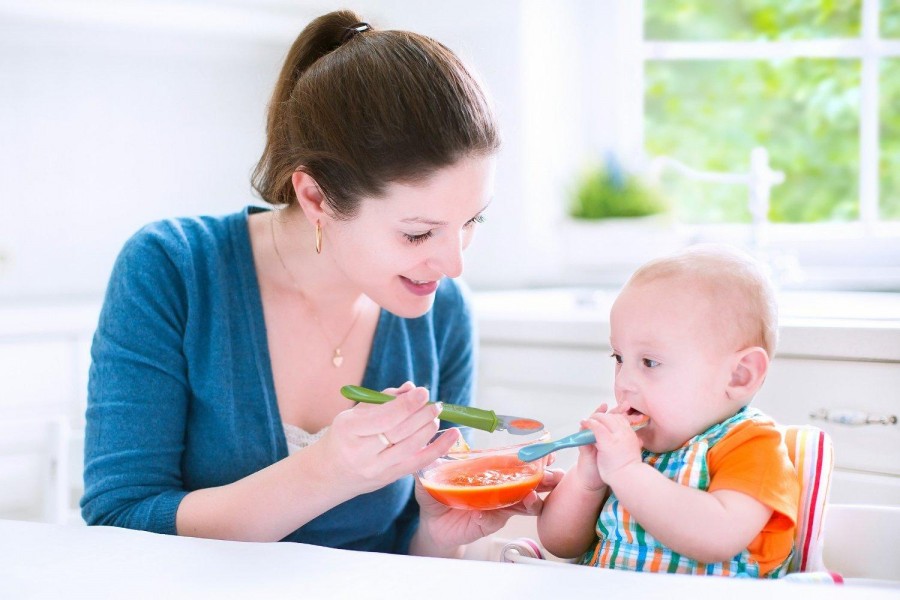
Children's meals with tuna - from 3 years old
Stewed tuna
Ingredients:
- 300 g tuna fillet;
- half a glass of dried apricots;
- half a cup of prunes;
- 1 bulb.
Thoroughly rinse prunes and dried apricots, chop. Chop the peeled onion into half rings. Rinse the fish, dry it, cut into pieces.
Place prepared ingredients (1/2 of them) in a heavy-bottomed saucepan (or roasting pan) in layers: onions, fish, dried fruits. Then repeat the layers. Pour in purified (filtered) water and put on low heat. Simmer covered for about half an hour.
Canned tuna and egg salad
Recipe in this article.
Oven-baked tuna
Ingredients:
- 200 g tuna fillet;
- salt on the tip of a knife;
- ½ teaspoon olive oil.
Rinse the fish, pat dry, cut into steaks, then brush with olive oil and salt. Salt should be used as little as possible. Place the steaks on a baking sheet or in a non-stick pan and place in the preheated oven.
Salt should be used as little as possible. Place the steaks on a baking sheet or in a non-stick pan and place in the preheated oven.
Bake for 7-15 minutes (depending on the thickness of the steak). You can check the readiness with a fork or a wooden skewer. You can also cook tuna steaks on the grill, without adding oil.
Raw and stewed vegetables, casseroles, fresh herbs are ideal accompaniment to tuna dishes.
Benefits of tuna for a child
Tuna is very popular all over the world, its benefits cannot be overestimated. That is why parents are interested in whether tuna is good for the child's body and the age of the child, which allows him to include this fish in his diet. 9Olo fish
- See also:
Tuna is a valuable commercial fish belonging to the mackerel family. This is a fairly large fish - its length reaches 5 meters or more. The color of her fillet is very unusual - red. Because of this color and amazing taste, tuna meat has been called “sea veal” by culinary specialists all over the world.
The color of her fillet is very unusual - red. Because of this color and amazing taste, tuna meat has been called “sea veal” by culinary specialists all over the world.
All mackerel are active swimmers, which leads to the accumulation of a significant amount of myoglobin in their muscle tissue. It is from him that the bright red-pink color of the meat depends, which is why the fish is sometimes called the “sea rose”.
Composition and calorie content of tuna
Due to the red color of the meat, tuna is called "sea beef".
The popularity of tuna comes as no surprise given its unrivaled flavor and composition. The meat of the mackerel giant contains many useful substances - from polyunsaturated fatty acids (omega-6, omega-3), essential amino acids to trace elements and vitamins.
There are differences in the percentage of nutrients in fresh and canned tuna meat. This is due to the partial dehydration of meat during heat treatment.
- There are no carbohydrates in tuna, which makes the product low-calorie and dietary.

- Protein content in fresh meat is about 24%, in canned meat up to 29%.
- Fresh fish contains about 5% fat, while canned fish in oil up to 8%.
- The nutritional value of 100 g of fresh tuna is 139-145 kcal. The calorie content of 100 g of tuna, canned in oil, is 200 kcal, and in its own juice - 110 kcal.
These data are taken into account when compiling dietary nutrition.
Tuna contains trace elements:
- magnesium;
- copper;
- iron;
- potassium;
- zinc;
- calcium;
- phosphorus;
- iodine;
- chrome;
- sodium;
- selenium;
- manganese.
The content of vitamins in tuna is also quite high: A, E, D, a whole galaxy of vitamins from group B 9 , B 12 ).
Tuna can be called the champion among fish in terms of the amount of nutrients it contains.
Benefits
The benefits of tuna cannot be overestimated:
- Despite the low fat content, tuna contains polyunsaturated fatty acids, which:
- ensure the normal function of the cardiovascular system;
- activate the activity of the brain;
- provide a healthy condition of the skin, nails and hair;
- improve visual acuity.

- Vitamin A, or retinol (650 mg/100 g of meat), activates tissue regeneration, growth of the child's body, improves immunity. Together with vitamin E, it exhibits antioxidant activity and cleanses the body of toxins, radionuclides, and toxic substances. The antitoxic effect is enhanced by trace elements selenium and chromium. They help cleanse the liver.
- Chromium is involved in the regulation of carbohydrate metabolism.
- Iodine ensures the prevention of thyroid diseases. It is necessary for the normal intellectual development of the child.
- Phosphorus strengthens muscles and bones, activates brain functions, improves eyesight.
- Vitamins B 1 (thiamine) and B 6 (pyridoxine) are involved in metabolic processes, they are necessary to ensure the functions of the liver and heart.
- Nicotinic acid (B 3, or niacin) has a calming effect on the nervous system.
- Vitamin B 4 (choline) helps to strengthen nails and hair, improve skin.
 Therefore, the use of tuna is recommended for skin diseases (dermatitis).
Therefore, the use of tuna is recommended for skin diseases (dermatitis). - Iron, vitamins B 9 (folic acid), B 12 (cyanocobalamin) from tuna will have an anti-anemic effect, participating in the processes of hematopoiesis.
- Vitamin D (calciferol) is essential for the regulation of calcium metabolism. Together with calcium and phosphorus, the vitamin will ensure the normal development of the skeleton for the child.
- Eating just 30 g of tuna every day can almost halve the risk of heart disease.
- Normalization of metabolic processes with regular use of this fish has a positive effect on the body of children suffering from allergic diseases, reduces the risk of developing an allergic reaction.
- Substances with antioxidant activity contained in tuna will protect the body from the formation of malignant cells. Tuna meat dishes should be eaten with arthritis or other joint damage.
- Inclusion of tuna in the diet of overweight children will help to get rid of extra pounds without losing muscle mass.
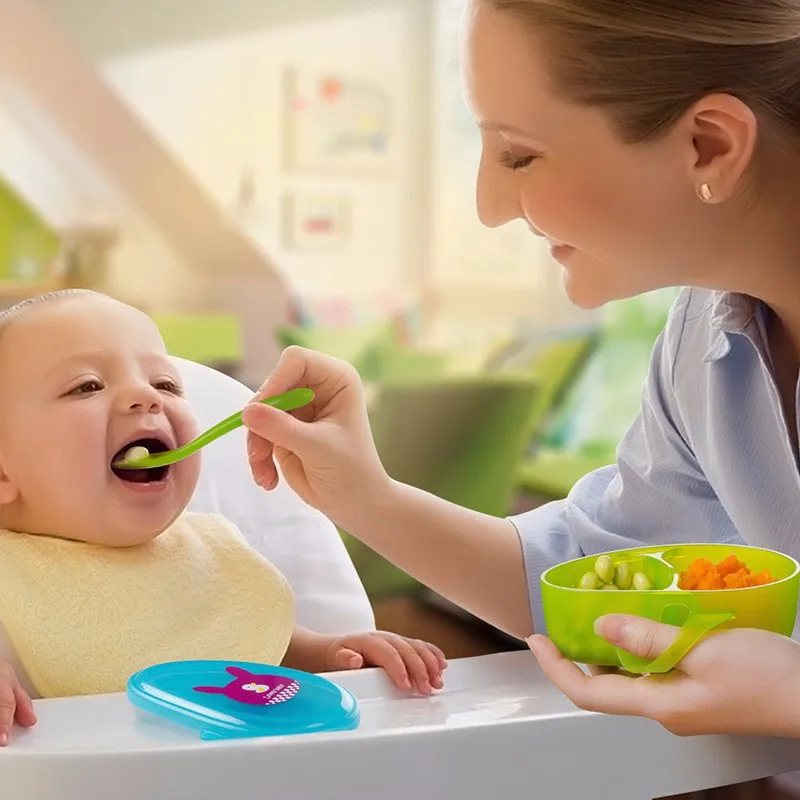
- An increase in the rate of metabolic processes with the systematic use of this fish leads to the normalization of blood sugar levels. The low calorie content of the product and the absence of carbohydrates in it makes it possible to include tuna meat dishes in the diet of children with diabetes.
How to choose fish when buying
You can buy fresh, frozen and canned tuna in stores. The shelf life of a fresh product is limited - no more than 4 days; frozen fillets can be stored for no longer than 2 weeks. Therefore, when buying a packaged product, you need to pay attention to the terms of harvesting and expiration dates.
- Fresh tuna fillets are usually sold from May to August.
- Tuna is similar in color to beef.
- The color of the meat must be uniform, without spots.
- Since fresh meat quickly loses its useful properties, it is better to buy it in vacuum packaging.
More about canned food
The composition of canned tuna is almost identical to fresh, but its calorie content is 2 times higher.
Canned tuna is available regardless of the season. It can be made in oil and in its own juice (a healthier option). For dietary nutrition, tuna in oil, as a more high-calorie product, is not suitable.
Canned food can be consumed without further processing or used for cooking. The properties of fresh, frozen and canned tuna are almost identical.
Fatty acids, amino acids, minerals and vitamins are completely preserved in canned meat. Only the calorie content of canned food in oil is almost 2 times higher than that of tuna in its own juice.
It is necessary to pay attention to the packaging itself, that is, the jar. You should not buy canned food in swollen cans or deformed ones with rust spots.
- High-quality canned food must be produced in accordance with GOST.
- Ideally, canned food is labeled "albacore". This marking indicates that inside is the meat of the best breed - white tuna, the most delicious and healthy.
- Specifications marked "dolphin friendly" means that the fishing was carried out in compliance with laws and technologies that prevent the death of dolphins.

Tuna inhabits warm waters, the best catch is made in the area of Japan, Spain, Italy. Tuna caught off the Seychelles and Thailand has fewer useful qualities; dark meat can be added to canned food.
Russian producers use frozen meat for production. Canned food in Russia, despite any labeling, does not guarantee either the authenticity or the quality of the product. Therefore, it is better for children to consume fresh tuna meat.
Harm
Useful properties and harm of tuna are incommensurable, but in some cases it can also have a harmful effect on the child's body.
- Meat, especially large meats, may accumulate mercury and heavy metal salts. Therefore, carcasses of large fish are not suitable for children, and they can be introduced to tuna no earlier than 3 years.
- If a child is allergic to any type of marine fish, it is also necessary to introduce tuna into the diet with great care, starting with 20 g of the product, after consulting a pediatrician and monitoring the child's condition.
 If you are allergic to mackerel, tuna is contraindicated for a child.
If you are allergic to mackerel, tuna is contraindicated for a child. - The high protein content of tuna meat prevents it from being given to children with kidney disease, especially those with kidney failure.
When can and should be given to children
Tuna can be introduced into the diet of children from 3 years of age. This is due to the fact that mercury can accumulate in fish meat, which will be dangerous to the body.
Daily intake of fish for children aged 50-70
- This product will provide the child's body with complete protein, essential amino acids.
- Even one serving contains half of the body's daily requirement for vitamins of group B.
Consumption of tuna is necessary for the harmonious development of not only the physical, but also the mental abilities of the child. Fish is useful for intellectual activity, so schoolchildren with their daily workloads need to include tuna in the menu at least twice a month.
This relative of mackerel also affects the emotional state, so its consumption will be useful for neurosis in children, with a tendency to depression in adolescents. Tuna meat should also be consumed by children involved in any sport.
Tuna is free from helminths and parasites, which is very important for children.
What and how to cook with tuna
For lunch, you can offer your child a delicious and very healthy soup with tuna.There are a lot of recipes for tuna dishes that can decorate the festive table and diversify the everyday menu.
Tuna meat is tasty both hot and cold. It can be:
- boiled;
- extinguish;
- bake;
- fry;
- salting;
- cook pâté;
- add to pastries, salads, sauces.
Frying is the least suitable way of processing meat for children. It is also important to remember that tuna is very sensitive to heat treatment: if it is overexposed on fire, the meat will become tough and lose its unique delicate taste.
Fish goes well with vegetables when baked in foil, children also like pizza with tuna meat. Filet can be served with mashed potatoes and pasta.
Several recipes:
Baked tuna
When baked in the oven, fish pieces are brushed with olive oil, salt and spices are added. To prevent the meat from being too dry, it should not be kept in a preheated oven for more than 7-10 minutes.
Fish stew
Tuna stew is easy to make. The fish is first lightly fried with onions, then its pieces are sprinkled with lemon juice and stewed for an additional 15 minutes.
Soup
You can also prepare a healthy and tasty soup.
- Cut into cubes 200 g potatoes, 1 medium carrot, 100 g celery.
- Put a tablespoon of butter and chopped onion into a frying pan and cook until golden brown.
- Add chopped vegetables there and simmer for 5 minutes.
- Then put everything in a saucepan, add water and 3 tbsp. l. milk, bring to a boil.

- Mix 50 g of flour with 0.7 l of milk and add the resulting mixture to the soup.
- After boiling, add 500 g tuna fillet cut into small pieces.
- The soup is boiled until the vegetables are cooked and salted.
Greens are added when serving.
Original salad with grapes
- To prepare it, grate the rind of 1 lemon and sprinkle it over 400 g of tuna fillet.
- Fish should be baked for 20 minutes in the oven at 180 0 C.
- The tuna meat is then cut into small pieces with a fork.
- A glass of lightly roasted nuts is also crushed.
- Grapes from 1 bunch cut into halves.
- Mix all ingredients together with 150 ml unsweetened yoghurt.
You can decorate the salad with grapes and zest.
Summary for parents
It is impossible to deny the usefulness of tuna. An important role for the growing body of a child is played by the amino acids contained in tuna meat, unsaturated fatty acids, minerals and vitamins.